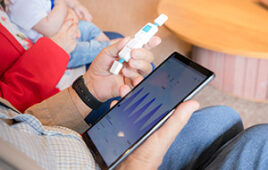The BioAnalytics Group LLC released an updated version of its data management system, BioPathwise DM version 2.4, the result of an ongoing, collaboration with the National Institute of Allergies and Infectious Diseases (NIAID), the Program for Immune Modeling Experimentation (PRIME), and Stockholm-based Contur Software.
A goal of the program is to build a repository and tools to make the models, data, and techniques accessible to the immunology research community. The BioAnalytics Group developed BioPathwise DM to simplify the task of recording, annotating, and locating data for both researchers and developers of novel analysis tools.
“Most scientists still keep paper laboratory notebooks to describe their experiments,” says BioAnalytics Group CEO G. Scott Lett, PhD. “Researchers who want to track their annotations electronically must do so manually—even if they collect raw data through existing software tools or spreadsheets. PRIME was successful in significantly expanding the amount of data captured electronically by using the Contur ELN electronic notebook.”
By integrating BioPathwise DM with the Contur ELN, the team has automated the process of quickly capturing data and transmitting it into the valuable shared PRIME repository.
Working directly with active researchers has been instrumental in driving the development of BioPathwise DM. “Throughout the program, the NIAID and all of the PRIME partners have provided information and feedback about their goals, bottlenecks and challenges,” says Dr. Lett. “As they adopted new laboratory technologies and developed new methods, the collaborators experienced a substantial increase in the variety of data contributed to the PRIME repository.”
The BioAnalytics Group development team has integrated commonly used applications and laboratory devices with BioPathwise DM including qPCR, image data, microarrays and flow cytometry.
BioPathwise is a pathway-centric research application based upon the pioneering technology of PathwayPrism developed at Physiome Sciences, and enhanced further as part of the PRIME contract. It accelerates research by allowing scientists to graphically view and work with pathway data from both public and internally developed sources. Connecting pathway diagrams to biological data and the mathematical formulas that describe the relationships, the system supports new types of analysis and communication between laboratory scientists, clinicians and computational biologists.
The BioPathwise DM data manager allows scientists with minimal computer skills to build knowledge repositories — customizing templates, capturing data from multiple instruments in any format, working with 3rd party analytical tools, and collecting analytical results in the same repository. In addition to data and analysis capture, the system is used to manage laboratory resources such as tissue samples and consumables together with the experimental protocols, raw data and analysis derived from the samples.




